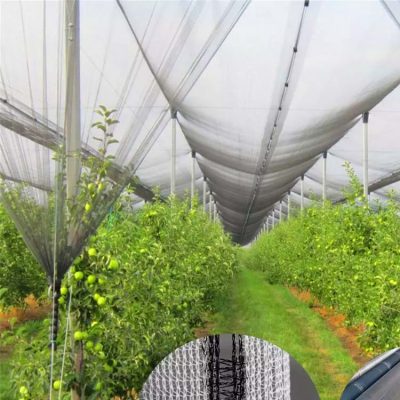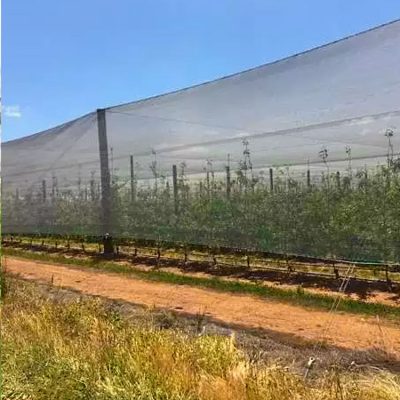Using agriculture nets offers several benefits that can enhance crop yield and quality. Here are some key advantages of using agriculture nets in farming:
- Pest Exclusion: Agriculture nets act as a physical barrier, preventing pests, insects, and birds from reaching the crops. This reduces the damage caused by pests feeding on plants, laying eggs, or transmitting diseases. By excluding pests, agriculture nets help maintain crop health and improve overall yield.
- Disease Prevention: Agriculture nets can effectively prevent the entry of pathogens and disease-causing organisms into crop fields. They act as a barrier, blocking the airborne transmission of fungal spores, viruses, and bacteria. This helps reduce the incidence of diseases and improves crop quality.
- Bird Protection: Birds can cause significant damage to crops by feeding on fruits, seeds, and young shoots. Agriculture nets, particularly bird netting, provide a physical barrier that deters birds and prevents crop damage. Protecting crops from bird predation enhances yield and ensures the availability of quality produce.
- Reduced Chemical Usage: By implementing agriculture nets for pest and bird control, farmers can minimize the reliance on chemical pesticides. This reduction in chemical usage has several benefits, including cost savings, reduced environmental impact, and improved food safety.
- Weather Protection: Certain types of agriculture nets, such as hail netting or windbreak netting, provide protection against adverse weather conditions. Hail netting shields crops from hailstone damage, while windbreak netting reduces wind speed and turbulence, preventing lodging or breakage of plants. Protecting crops from extreme weather events contributes to improved yield and crop quality.
- Improved Microclimate: Agriculture nets, such as shade netting or frost protection netting, help create a favorable microclimate for crops. Shade netting regulates temperature and reduces sun exposure, protecting plants from heat stress and sunburn. Frost protection netting traps a layer of air, preventing temperature extremes and safeguarding crops from frost damage. These nets promote optimal growing conditions, leading to healthier plants and better yields.
- Pollination Enhancement: Agriculture nets can be used strategically to enhance pollination. By excluding unwanted insects or facilitating controlled pollination, farmers can ensure effective pollination and maximize crop yields, especially for fruiting crops that rely on pollinators.
- Crop Quality and Appearance: Agriculture nets help maintain crop quality and appearance by preventing physical damage from pests, birds, or adverse weather conditions. This results in higher marketable yields, improved visual appeal, and better market value for the produce.
It’s important to select the appropriate type and mesh size of agriculture nets based on the specific crop requirements, pest or bird pressure, and environmental conditions. Proper installation, regular maintenance, and integration with other crop management practices contribute to the successful utilization of agriculture nets in enhancing crop yield and quality.








